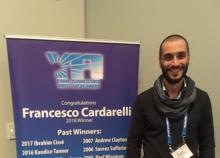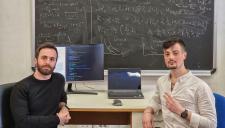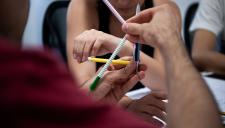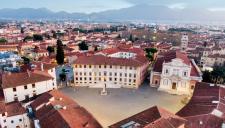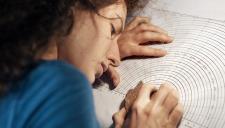The research project "CAPTUR3D: Capturing the Physics of Life on 3D-Trafficking subcellular Nanosystems", conceived and led by Francesco Cardarelli (Associate Professor in Applied Physics at the Scuola Normale Superiore of Pisa), was awarded 2 million euros by the European Union in the last round of ERC Consolidator Grants.
Pisa, 17th December 2019
Our cells receive, process and emit signals which are fundamental to our life, using structures (also known as "organelles") that are less than one millionth of a metre in size and are continuously moving. Up to now, in order to study these signals we have only been able to interfere with living matter by destroying it or, at best, by "freezing" it.
Not any more: beams of light will be launched into orbit around the structures of interest, without letting go of them, to be able to study them with a precision never reached before.
"Like a satellite that revolves around its planet: only that the planet is microscopic and the satellite is the tip of a beam of laser light. And it is not the force of gravity that keeps it in orbit, but the signals themselves captured by the new reference system/system of reference ", explains the creator of this original approach, Francesco Cardarelli, Associate Professor in Applied Physics at the Scuola Normale Superiore of Pisa.
This innovative strategy will be applied to the insulin granule, a microscopic structure responsible for the regulation of glucose levels in our blood, the malfunction of which is a distinctive factor in the pathophysiology of diabetes. The project - "CAPTUR3D: Capturing the Physics of Life on 3D-Trafficking subcellular Nanosystems", awarded 2 million euros by the European Union in the last round of the ERC Consolidator Grant- will be developed at the NEST laboratory of the Scuola Normale Superiore and will also involve the Azienda Ospedaliera Universitaria Pisana (the University Hospital of Pisa). In particular, the group of Endocrinology and Metabolism of Organ and Cellular Transplants led by Professor Piero Marchetti will guarantee access to valuable tissues derived from human patients, both healthy and diabetic.
"From a physical point of view – Cardarelli goes on to explain - what is proposed/set forth is a change in the system of reference: from the" conventional "one of a single cell to the unconventional one of a single moving organelle. We will open a new frontier in Molecular Biophysics by bringing the most sophisticated analytical techniques in our possession into orbit around microscopic planets inside our cells, to make visible what has so far escaped any attempt at investigation. Unraveling the molecular secrets of the insulin granule and its role in diabetes are just the first of many challenges ahead ".

